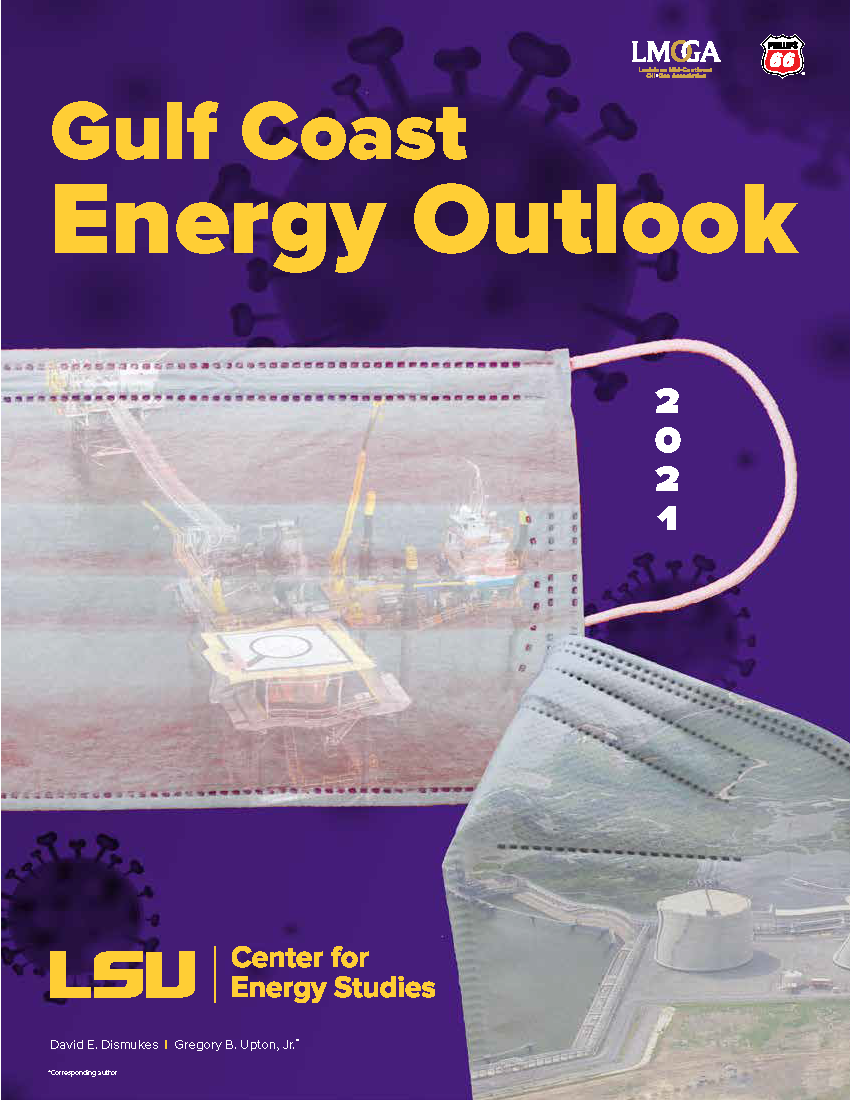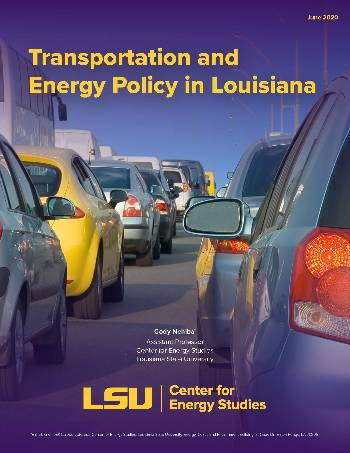2020
Posted December 3, 2020
Wang Named Chair of American Board of Health Physics
Wei-Hsung Wang, LSU Center for Energy Studies professor and Radiation Safety Office director, has been appointed chair of the American Board of Health Physics (ABHP) for 2021. Wang was installed as a board member of the ABHP in 2019 and currently serves as vice chair. The ABHP grants professional certification in the field of health physics. The certification process is accredited by the Council of Engineering and Scientific Specialty Boards.
“I am grateful for the opportunity to serve as chair of the ABHP, which plays a vital role in assuring the highest standards in the practice of health physics and advancing the profession of health physics,” Wang said.
The ABHP board includes representatives from the Mayo Clinic, Philips Healthcare, Tidewater, Inc., the U.S. Nuclear Regulatory Commission, and Y-12 National Security Complex. Wang is the only board member from academia. His term as a board member ends in 2023.
About health physics: Health physics is the area of public health and environmental
health engineering that deals with the safe use of ionizing and non-ionizing radiation
in order to prevent harmful effects of the radiation to individuals, population groups,
and the biosphere via the application of diverse scientific principles. Health physicists
are responsible for the safety and security aspects in the design of processes, equipment,
and facilities utilizing radiation sources, as well as for the adequate disposal of
radioactive waste, ensuring that radiation exposure to personnel is minimized and
is at all times within regulatory limits.
Posted November 18, 2020
Gulf Coast Energy Outlook 2021 Released
On November 18, 2020, the LSU Center for Energy Studies released the 2021 edition of the Gulf Coast Energy Outlook (GCEO). The 2021 GCEO examines the impacts of the COVID-19 pandemic, the 2020 hurricane season, trade negotiations with China, and potential policies of a Biden administration on the region’s upstream oil and gas activity, downstream investments in refining and petrochemicals, energy exports, electricity demand, and energy sector-specific employment. David E. Dismukes, executive director and professor, LSU Center for Energy Studies, and Greg Upton, associate professor, LSU Center for Energy Studies, authored the report.
In March of 2020, the outlook for the energy industry changed rapidly when the COVID-19 pandemic essentially shut down the global economy. Oil markets were rocked by a historic decline in demand and a failed OPEC deal to curtail output and sustain prices. For its economic modeling, the GCEO assumes that COVID-19 attenuates globally and that the world will return to some level of normalcy over the next two years. The GCEO assumes that trade talks with China will not deteriorate, that new tariffs will not be implemented, and that export commitments on net do not impact demand for Gulf Coast energy products. The GCEO also assumes that the Biden policy of banning permits offshore will not go into effect, at least over the forecast horizon. If some version of this proposed policy were to be enacted, it could have significant negative economic implications for the Gulf Coast region.
Findings include:
- By May of 2020, Gulf Coast oil production was down 13.7 percent from the prior May. Gulf Coast natural gas production declined by 7.1 percent in May of 2020 relative to May of 2019. On an annualized basis, both U.S. and Gulf Coast oil production are anticipated to decline over the next three years.
- Today, futures markets are anticipating that there will be enough supply to meet global demand at between $40 and $50 per barrel for the next decade.
- While natural gas prices are currently lower than markets predicted at this time last year, prices are expected to be higher in 2021 and 2022 than futures markets suggested over the past two years.
- The U.S. electricity load has been relatively flat over the past decade, while the Gulf Coast load has grown. As a result, the share of electricity usage from Gulf Coast states increased from 15 percent in 2007 (i.e. 2009 pre-recession) to 17 percent in 2019 (the most recent full year of data). Gulf Coast demand is down 4.3 percent relative to 2019, as compared to 3.8 percent for the U.S.
- Since 2013, U.S. and Gulf Coast total CO2 emissions from power generation have been down 13.8 percent and 10.4 percent, respectively. The carbon dioxide emissions per MWh of electricity produced has declined by almost exactly 16 percent in both the U.S. and Gulf Coast region.
- Gulf Coast wind capacity has increased by more than 19 GW over the past decade. Another 18 GW of wind capacity are currently being planned. Solar capacity is anticipated to increase by 33GW in coming years.
- The 2021 GCEO energy manufacturing investment outlook, until the year 2029, totals $105 billion. This investment is composed of $58 billion in LNG investments (55 percent) and $47 billion (45 percent) in energy manufacturing investments (non-LNG). Most of the total investment will be in Louisiana ($63.5 billion or 60 percent), followed by Texas ($41.5 billion or 40 percent).
- Model results suggest that Louisiana’s upstream employment “bottomed out” in September of 2020. The GCEO anticipates that the worst is over for the upstream oil and gas extraction and services sectors. By the end of 2021, Louisiana is expected to regain about 2,600 upstream jobs relative to the trough in September of 2020.
- Louisiana refining and chemical manufacturing employment is expected to increase by about 300 jobs by the end of 2021, or about a 0.8 percent increase.
- Louisiana continues to employ more workers in refining and chemicals manufacturing than in upstream oil and natural gas extraction.
Posted August 26, 2020
Study Examines Role of Diesel Fuel Taxes in Freight Trucking Collision Externalities
In a paper recently published in the journal Regional Science and Urban Economics, CES Assistant Professor Cody Nehiba investigates how diesel fuel taxes for freight
trucking may be contributing to traffic accidents, one of the leading causes of death
in the U.S. Although any vehicle entering the roadway will increase the risk of accidents
for other road users, freight trucks disproportionately generate these costs due to
their high mileage and weight. Freight trucks can also jointly determine their mileage
and weight---shipping firms are known to minimize fuel costs by reducing the number
of shipments they make while simultaneously increasing the cargo on each shipment
when fuel prices rise. Nehiba examines how truck weights and truck miles traveled
affect truck-involved collisions to determine if increasing the federal diesel fuel
tax---which leads to fewer but heavier trucks on the road---provides benefits for
society.
Nehiba’s analysis uses 3.5 billion truck-weight observations to estimate how truck
miles traveled and truck weight affect both the total number of collisions as well
as the distribution of collision severity. Diesel fuel taxes reduce truck miles traveled,
which is hypothesized to provide benefits in terms of reductions in pollution, congestion,
and total collisions. The taxes lead the remaining trucks to be heavier, though, as
firms optimize their dispatching decisions to minimize fuel costs. Increasing truck
weight may lead to more severe accidents involving injury or death while also increasing
the number of collisions if heavier trucks are more difficult to maneuver or have
increased braking requirements.
Nehiba’s estimates reveal that both truck miles traveled and truck weight increase
the total quantity of collisions, and heavier trucks skew the collision distribution
toward fatal outcomes. A 1% increase in a truck’s cargo weight (about 300 lbs. on
average) increases the probability that an individual is injured in the collision
by 0.167% and the probability that the collision is fatal by 0.268%.
“A $0.37 diesel fuel tax increase---equivalent to a carbon tax of $36 per metric ton
of CO2---significantly reduces pollution, congestion, and the total number of truck-involved
collisions by over 4,100 crashes annually,” Nehiba said. “Unfortunately, these benefits
are more than offset by an increase of 7,495 fatal collisions.”
Cumulatively, the diesel tax is shown to increase the external costs of trucking by
$55.7 billion annually in the U.S., while also creating deadweight loss in the trucking
industry.
The results suggest that truck weight is a first-order policy concern, and that policies that directly price truck weight, like an axle-weight-mile tax, would dominate the currently used diesel taxes. By jointly pricing mileage and weight, such a tax would be able to deliver pollution and congestion reductions similar to a diesel tax, while also saving lives and preserving roads by reducing truck weights.
The article is available here (subscription required).
Posted June 24, 2020
LSU Center for Energy Studies Releases Transportation, Energy Policy Report
 Louisiana’s highway system consistently ranks poorly in traffic congestion, air pollution,
accidents, and road conditions. Cities are burdened with immense levels of congestion
relative to their size and population. The state experiences above-average traffic
fatalities per vehicle mile traveled (VMT): Almost 800 lives were lost in collisions
in the state in 2018. The pavement quality within the state is among the worst in
the nation, and air pollution, while improving, is still a cause for concern.
Louisiana’s highway system consistently ranks poorly in traffic congestion, air pollution,
accidents, and road conditions. Cities are burdened with immense levels of congestion
relative to their size and population. The state experiences above-average traffic
fatalities per vehicle mile traveled (VMT): Almost 800 lives were lost in collisions
in the state in 2018. The pavement quality within the state is among the worst in
the nation, and air pollution, while improving, is still a cause for concern.
In a new white paper, LSU Center for Energy Studies Assistant Professor Cody Nehiba examines the status of Louisiana’s transportation system and transportation energy policies. He develops policy recommendations for improving Louisiana's transportation network that align the private costs of driving with the full social costs of driving, which include the costs of pollution, congestion, accidents, and road damage.
“Some simple policy changes could address these issues,” Nehiba said. “First, increasing the state’s gasoline tax would reduce congestion, pollution, and accidents. Replacing diesel taxes with taxes that charge freight trucks on both the weight of their vehicle and miles driven would reduce the number of fatal collisions and preserve the state’s roads. And finally, electric vehicle subsidies must be combined with efforts to reduce emissions from electricity generation to improve air quality.”
Nehiba uses data from the Louisiana Department of Transportation and Development and the U.S. Federal Highway Administration to show that Louisiana’s VMT has increased more rapidly than neighboring states, a likely cause of the state’s congested roadways. The above-average VMT, along with below-average transportation funding and infrastructure investment, strain the state’s transportation system and expose underlying issues.
Louisiana currently has the 43rd lowest gasoline tax in the U.S. at only $0.20 per gallon and is among four states that have not changed their gasoline tax rate for the past 25 years or more (the other three are Texas, Nevada, and Colorado). Most fuel taxes were and continue to be levied to fund road infrastructure and repair, but they can also help align the private and social costs of driving. Nehiba illustrates how a gasoline tax increase to $0.30 per gallon may be able to remedy some of Louisiana’s transportation issues.
“The most significant outcome of an increase in the gasoline tax would be a reduction in travel demand,” he said. “Drivers would likely choose more fuel efficient vehicles, switch to public transportation, walk instead of drive, and reduce the quantity or length of some leisure trips. These adaptations would help reduce congestion, fuel consumption, and accidents.”
There are indications that some of these ideas are gaining traction within the state, Nehiba notes. “Residents and policy makers acknowledge the condition of the state’s infrastructure,” he said. “Recent efforts to increase the gasoline tax are evidence of their desire to implement policy.”
Posted May 28, 2020
2020 Analysis Released: Meeting Louisiana’s Rising Industrial Energy Demands through Demand Response
 A new white paper by LSU Center for Energy Studies Assistant Professor Brittany Tarufelli
analyzes a method regional electrical utilities can use to better meet Louisiana’s
surging industrial energy demands.
A new white paper by LSU Center for Energy Studies Assistant Professor Brittany Tarufelli
analyzes a method regional electrical utilities can use to better meet Louisiana’s
surging industrial energy demands.
“As Louisiana’s largest industries grow, so do their energy needs, and Louisiana needs to find ways to make that energy as affordable and reliable as possible,” said Tarufelli. “Ultimately, expensive or disrupted energy could mean losing major economic opportunities to other states.”
In “Foundations for an Intelligent Energy Future: Demand Response Potential in Louisiana,” Tarufelli’s analysis focuses on how Louisiana can best apply demand response, a method for electricity utilities to communicate with and incentivize industrial customers to shift peak energy consumption away from utilities’ peak demand periods. The paper highlights numerous benefits Louisiana can reap by increasing participation in demand response programs. These include minimizing spikes in energy demand and corresponding prices, reducing the risk of blackouts and energy transmission congestion; and enabling utilities to leverage current energy production facilities rather than build new power plants.
“Effective demand response programs can lower electricity prices, system costs, and run the electricity grid more reliably in transmission-constrained regions,” said Tarufelli. “They can be a major tool to keep Louisiana’s economy competitive in the long haul.”
According to Tarufelli, Louisiana is uniquely poised to increase demand response participation among its industrial customers. Driven by energy-intensive chemical, petroleum, and natural gas industries, Louisiana is a top state in terms of total per-capita energy consumption. In addition, the state’s energy-intensive industrial sector is forecast to grow over the next three years, with 125 projects across 12 industries, valued at $32 billion.
The paper highlights that the state could easily offer its largest energy users access to a variety of utility- or market-administered, incentive-based and price-based demand response programs; however, several barriers currently prevent Louisiana from achieving the benefits of demand response. The paper presents recommendations based on best practices that can be utilized by stakeholders, including the Louisiana Public Service Commission, to remove barriers to participation and design compensation mechanisms that would allow for increased participation in demand response programs.
Posted March 9, 2020
LSU Researchers Submit La. Mineral Revenues Recommendations
Professors Gregory B. Upton, LSU Center for Energy Studies, and James A. Richardson, LSU Public Administration Institute, have authored the report “Mineral Revenues in Louisiana,” prepared in response to Senate Concurrent Resolution 4 of the 2018 second extraordinary session. The report is a continuation of work from the Task Force on Structural Changes in Budget and Tax Policy created by House Concurrent Resolution 11 of the first extraordinary session of 2016.
In the report, Upton and Richardson take a broad and long-term look at Louisiana’s severance tax system. After having met with public and private stakeholders, reviewing the literature on the taxation of oil and gas, and analysis of statistical information, they have prepared recommendations on how the legislature might simplify the tax system, as well as general information and analysis to aid in policy decisions.
Their major recommendations are
- Institute an equivalent volumetric tax rate for oil and natural gas with rate to be
established
semi-annually; - Remove exemptions associated with horizontal drilling, tertiary wells, and deep wells for new activity;
- Implement recommendations (1) and (2) simultaneously while maintaining revenue neutrality
with respect to current severance tax projections; - Implement the new severance tax rates for oil and gas production from new activity; activity originated before tax law change will comply with the current tax structure.
These recommendations are consistent with a broad base and low rate philosophy, revenue neutrality for severance tax collections, and administrative efficiency.
Alternative recommendations are
- Establish a volumetric tax rate for oil with the rate to be established semi-annually;
- Remove the verbiage “posted field price” from R.S. 47:633 (7);
- Review and simplify the calculation of the volumetric rate for natural gas and establish
the rate
semi-annually; - Remove exemptions associated with horizontal drilling, tertiary wells, and deep wells
while
maintaining revenue neutrality with respect to current severance tax projections.
